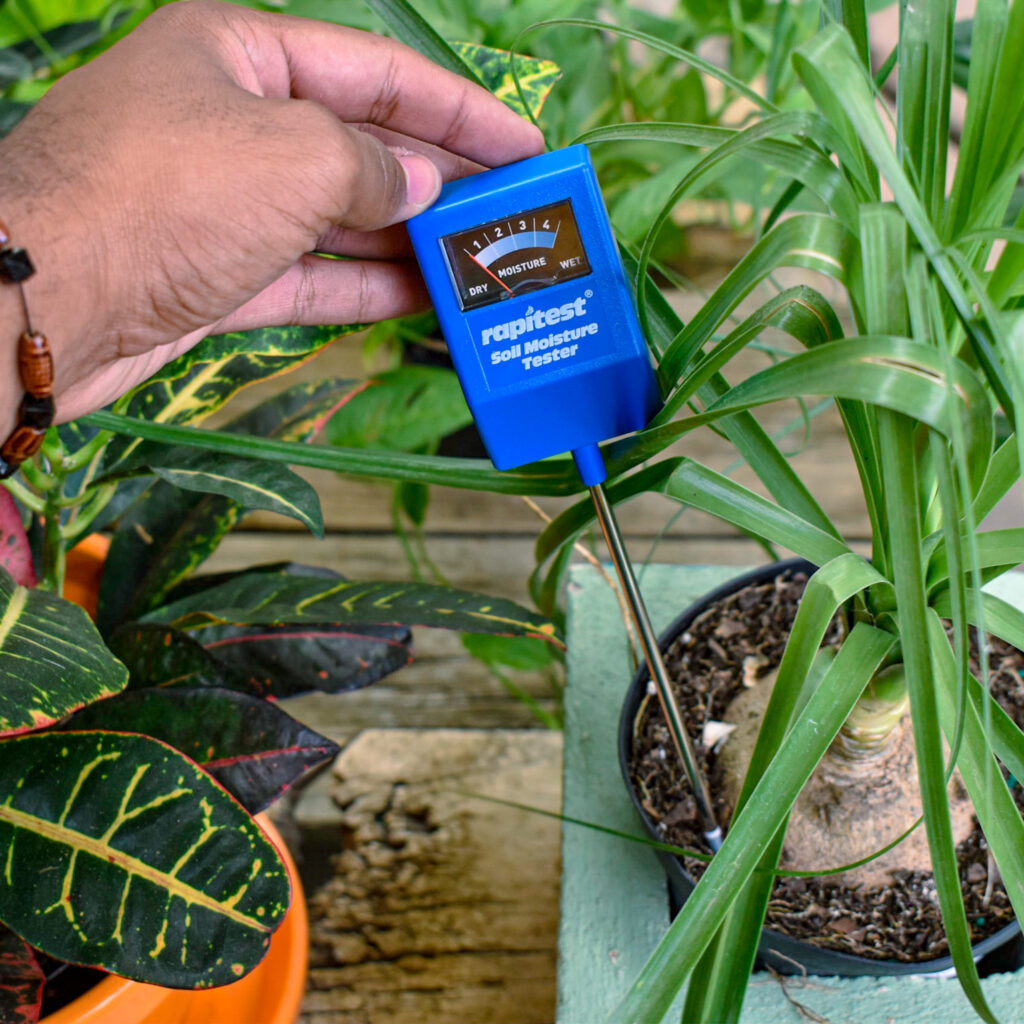Over the past couple weeks, we’ve talked to lots of customers about adjusting watering for winter. Most are still watering too much. Plants and lawns need less water, but it’s been tricky to gauge lately with warmer weather and intermittent rain. Here are a few winter watering do’s and don’ts.
DO: Slow Down Watering for Established Lawns and Plants
Slowing down watering will slow metabolism in your trees, shrubs, groundcovers, lawns, and potted plants, and this makes them more tolerant of a freeze. Also, excessive frequency of lawn watering in winter makes grass more susceptible to Take All Root Rot fungus.
DON’T: Run Sprinklers More than Once Every 2 Weeks
At this point (mid-December through the end of January), most sprinkler systems should be turned off and only used as needed, and no more than once every 2 weeks. If freezing temperatures are in the forecast, run the sprinklers the previous afternoon to add heat to the soil and fill air spaces in the soil with water to exclude the cold air.
DO: Continue to Water Winter Flowers and Veggies
Newly planted trees and shrubs, newly potted plants, and winter annual flowers and vegetables in active growth will need more regular watering, and may be particularly sensitive to a cold, low-humidity dry north wind. If there are zero clouds in the sky, and you are licking your lips, and there is a stiff breeze blowing, that dry breeze can necessitate watering despite the cool/cold temperatures.
DON’T: Be Fooled by Light Rainfall
We typically don’t get much significant rainfall in December and January, we get periodic misty drizzle. Keep in mind that even if it drizzles all day, very little moisture penetrates our heavy clay soil. This fascinating article from Texas A&M explains that it takes a whopping 2.5″ of rain to fully penetrate and soak clay soil down to 12″ deep. So, even if we get a little rain, it’s important to continue to water new plants, winter flowers and veggies. When in doubt, use a moisture meter!




susie says
Not in regards to watering.My lawn was hit by grubs (bad) is it best to pull out the dead grass or leave it ?
DeAnna Baumgartner says
Leave the dead grass so weeds do not take over the area. New sod can be laid in the spring
Cheri says
What about the Bluff? How often should you water sandy soil in the winter?
Thank you!
Cheri McDonald
Jesse says
Hi Cheri – the same advice applies for sandy soil in the Bluff. Sand dries out faster, so you may need to check moisture levels more often if we have several dry, sunny, or windy days in a row. But generally, not more than once every 2 weeks with sprinklers.